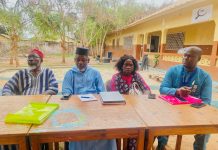This article is about Understanding Elections and Civic Responsibility.
In this lesson, I am going look at three aspects of what a voter should understand. And these are; getting the most from your vote, organizing civic engagement and Engaging with Candidates and Elected Officials.
These three seek to educate and inform on the role of citizens in the electoral process, and provide guidance on how to exercise civic responsibility and hold candidates and officials accountable – before, during, and after elections.
The right to vote is inseparable from the right to participate in public life. Through voting, you can choose the candidate who will work on the issues you care most about. Voting helps steer policies that affect both the future direction of your country and your daily life. For example, if youth unemployment is an issue that is important to you, you would want to vote for a candidate who has the best plan to create jobs or fund training programs aimed at youth.
During an electoral period, you have a certain set of rights and responsibilities that are true for all free and fair elections. First, you have the right to support or campaign on behalf of any candidate. Second, to vote freely for any candidate or measure of your choosing, and third, to have your vote kept confidential.
Voting is important, but Election Day is only one day. The periods before and after an election are also opportunities for you to advocate for issues that you care about. Before an election, candidates looking to attract votes are often willing to learn more about issues of importance to their constituents. During this period, ask candidates to make a promise, known as a campaign pledge, to pursue a certain policy when they get elected. After an election, hold your representatives accountable for following through on these promises.
For example, let’s say that during a campaign, a candidate promised to reduce youth unemployment. After they are elected, you can form an advocacy group to remind them of this promise. Your advocacy group can pressure elected officials to create and pass laws that would help more young people find jobs. Your group can also track how the government spends public funds to make sure they are being used for their intended purposes, such as youth skills-‐‑building programs. These activities help fight corruption in public spending. They also remind elected officials to pay attention to their constituents’ concerns throughout the whole electoral cycle.
So how can a voter make informed choices about candidates and issues to support? You cannot truly express your political voice unless you are first informed about your voting choices. In deciding how to vote, you should focus on the candidate’s ideas for the future.
Look beyond the personalities of the candidates or who might share your religion, gender, ethnicity or place of origin.
Organizing and attending candidate meetings is one way voters can get information on candidates’ policies before casting their ballots.
As a voter, focus on the issues. Issue-‐‑based voter education assists voters in making decisions based on a specific problem. That helps to ensure that voters focus on how the candidate plans to solve a problem, not their overall ideology. Make sure candidates are aware of your main concerns and why an issue is relevant to your life. Know what matters to you, whether it’s health care, education or unemployment. Focusing on issues helps you understand how voting for a certain candidate, party or policy can lead to change you want to see.
Grassroots Organizing For Civic Engagement
In this lesson we’ll review how grassroots organizing applies to an electoral campaign. We’ll also look at how it can be used for a social movement, like women’s rights or access to quality education.
There are three key elements to any grassroots campaign: leadership, capacity building, and executing your plan.
The most critical component of grassroots organizing is great leadership. Leaders have a plan, with specific goals, a timeline, and clearly defined measures of success. Leaders bring people together. They provide vision and ensure that everyone is working in common purpose and that everyone knows their respective roles. They create infrastructure for their cause by delegating specific tasks to others. They do what they say and give others a chance to be successful.
No movement can succeed without good leaders.
Another critical component of a successful campaign is the ability to create capacity. Creating capacity means to draw more and more people into your campaign, both at the leadership level and developing a list of supporters. We call this “list building.”
Your list of supporters is critical. You must cultivate this list, adding more and more committed supporters each day. They understand your cause and have agreed to be supportive. This agreement can be a verbal communication — a one-on-one meeting or phone conversion — or a written communication via social media, text message, email or letter. Supporters know that they will be asked to do something in the future for your campaign and they will. For instance, vote for a particular candidate on Election Day. You should have contact information for your supporters so you can communicate with them regularly and provide updates. Celebrate good news with your supporters as your campaign progresses, and inform them of any big announcements. You should prepare your supporters so that they know there will be peaks and valleys in your campaign. And they should know that their support, especially in the more difficult times of the campaign, is absolutely critical.
To be continued




















